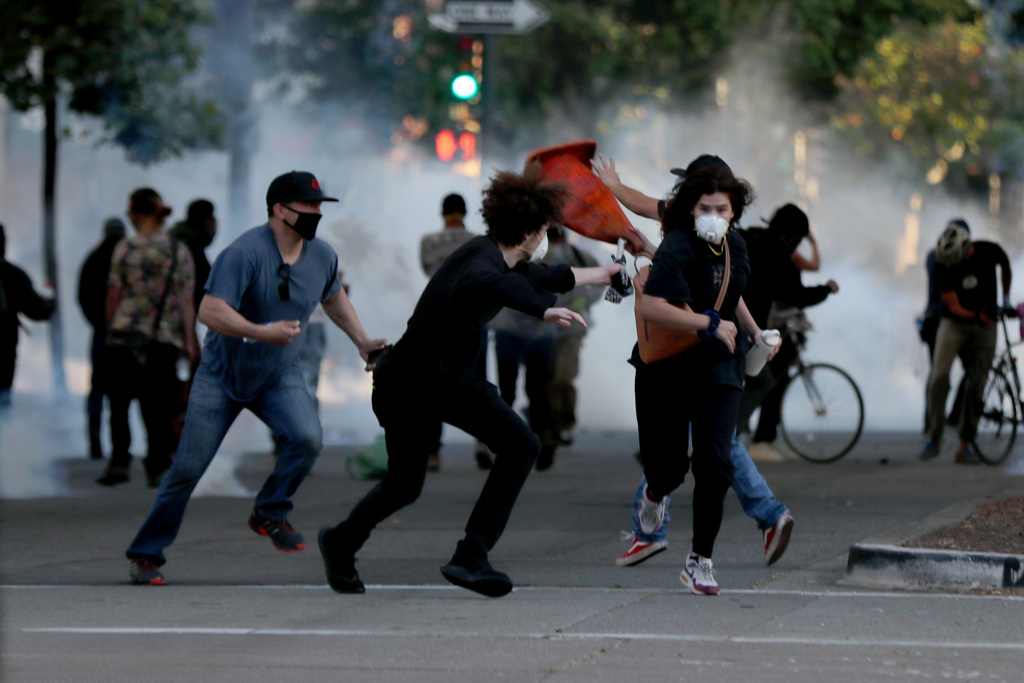While demonstrators throughout the country take to the streets in the thousands and congressional Democrats prepare for sweeping police reform bills, the images of police using aggressive and violent tactics on protesters dominate the news and social media.
Perhaps in a country where the president actively encourages police to “dominate” and “do retribution” against protesters, punitive measures taken by police to squelch First Amendment rights is to be expected. But, aren’t we better than that? Haven’t we been here before? And do we learn nothing from past mistakes?
In Oakland, the answer to those questions are “no,” a resounding “yes” and “apparently not.”
In 2005, Oakland agreed to implement reforms as a result of lawsuits arising from an April 2003 anti-war demonstration at the Port of Oakland where 58 people were injured with wooden bullets and shot-filled bean bags. Until then, Oakland police had no uniform protocol for handling crowds. The National Lawyers Guild and American Civil Liberties Union worked with the city of Oakland and OPD to craft a new policy that gave the police a comprehensive framework to protect life and property, while respecting freedom of speech.
Lack of adherence to those policies lead to further, more refined reforms that came about, again, through litigation, after protesters were severely injured by police at Oakland rallies after the sentencing of the BART police officer who killed Oscar Grant in November of 2010 and after the Occupy Oakland demonstrations in the Fall of 2011.
Despite countless meetings and trainings since the implementation of Oakland’s model crowd control policy, the Police Department ignores its very clear directives. There is no question that large angry crowds, even if peaceful, present challenges to police on the streets. If there comes a time during a protest when controlling the crowd becomes necessary, the policy should be followed to prevent chaos and needless injuries and unlawful arrests.
In this age of COVID-19, where the entire world is worried about respiratory infections, the OPD decided to clear the streets by dousing protesters with teargas, continuing to shoot teargas canisters even as the crowd was dispersing, in direct violation of the policy. And, at a time when the state has taken drastic measures to move inmates out of jails to protect them from the virus, many arrestees were taken to Santa Rita Jail for booking, despite state law that provides for people to be cited and released for misdemeanor offenses.
The policy that OPD itself negotiated, recognizes that in a crowd setting, there may be law-breakers closely mixed in with lawful protesters, journalists, legal observers and even casual passersby. That is why there are special restrictions on the use of dangerous weapons such as flash bangs and specialty impact munitions. Nonetheless, these weapons, too, were carelessly employed during last week’s demonstrations.
In the context of protests, the proper role of law enforcement is to facilitate First Amendment activity by enabling peaceful protest. Oakland’s crowd control policy is not advisory. It is a federal court order. Following the policy not only promotes basic democratic values, it would save the city of Oakland literally millions of dollars in liability after civil lawsuits make their way through the court system.
At a time when the city of Oakland is teetering on the precipice of financial ruin, having been identified as among the most financially imperiled cities in the state, following their own crowd control policy seems like a no-brainer.
Bobbie Stein is a criminal defense and civil rights attorney. She is a member of the National Lawyers Guild and a board member of the California Attorneys for Criminal Justice.



















